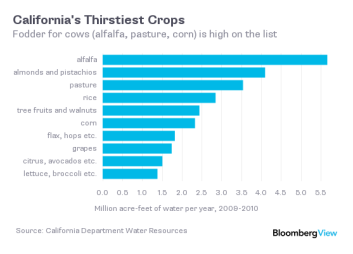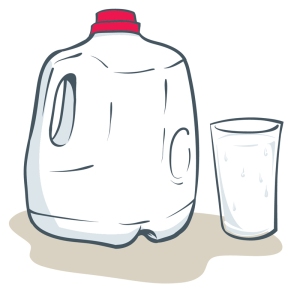
5 Ways to Reduce Your Water Footprint
The best thing about the drought in California it that it has prompted a much-needed conversation on water consumption. Consider the stats in the state of California: thought it consumes 20 trillion gallons of water each day, this rate nearly doubles the combined flow of the state’s largest rivers — the San Joaquin and Sacramento rivers.
But, even if you don’t live in California, your water footprint is ever-important. Around the world we are using our freshwater resources faster than they can be replenished. Predictions estimate that by 2025, in 10 years time, 48 countries and a whopping 35% of the world’s people will face a water scarcity dilemma. If the world is going to maintain this precious resource, we all need to change our ways, and influence the people and industries around us to do the same.
And yet what can you as an individual do? The truth is: you can do a lot. In fact, your actions are already impacting the world around you, in one way or another. So here are 5 ways to make sure your mark is positive.
1. Wash, Just With Less Water:
I’m starting with what is perhaps the easiest thing you can do to save water: turn off the faucet. While you’re brushing your teeth? Faucet off. Your 40-minute shower? Reduce it by half. And the steady stream of freshwater you feel is necessary to rinse your dishes before you put them in the dishwasher? Well, that’s just wasteful.
2. If It’s Yellow, Let It Mellow:
Toilets use between 1.6 to 7 gallons per flush. To put that in perspective, think about the size of a gallon of milk. And think about two of those — filled with perfectly good drinking water — being flushed down the toilet. So, as disgusting as it may be, you might want to wait for the poo to pull the plug.
3. When It Rains, You Pour:
Start your own rainwater harvesting system at home. Place extra buckets outside your home and use the water collected from rain to water your plants instead of using a sprinkler system. If you want to get even more technical about it, here’s a great step-by-step guide on building such a system for yourself.
4. Share the Load:
First of all, it’s important to note that using a dishwasher for your dishes does conserve more than washing your dishes by hand. A study by a water NGO in the United Kingdom — Waterwise — found that dishwashers consume around 3-4 gallons of water, while washing your dishes by hand can use up to 16 gallons. But, your can still make sure your washing practices are as sustainable as possible by filling the dishwasher before washing. And this applies to the laundry machine as well!
5. Eat Wisely:
One of the best ways you can increase your personal sustainability is through the food you eat. Since agriculture is the number one user of water worldwide (about 70% of our freshwater), influencing agriculture through the food you consume can have an immense impact. This is especially true for fellow Californians, where agriculture accounts for 90% of the state’s water consumption.
 What to avoid: the following graph shows how much water/food type comes from crops grown in California. As it shows, alfalfa, almonds and pistachios, and pasture (grass) suck up a lot of water while crops like lettuce, broccoli, spinach, and avocados use comparatively less.
What to avoid: the following graph shows how much water/food type comes from crops grown in California. As it shows, alfalfa, almonds and pistachios, and pasture (grass) suck up a lot of water while crops like lettuce, broccoli, spinach, and avocados use comparatively less.
Because of these statistics, almonds have received a lot of flack recently. Yet, many experts argue that the water necessary to support food for meat (such as alfalfa and grass) accounts for the most water. In fact, according to Justin Fox, raising cows takes up more water than any other activity in California. So what to do? That’s up to you, but now you can make an informed decision!
Bonus Tip: Drink tap water!
As ironic as it sounds, drinking tap water is far more sustainable since many of the other drinks we consume took a considerable amount of water to produce. On average, 35 gallons of water are used to produce a cup of coffee (including the water required to grow coffee) and 132 gallons of water to produce a 2-liter bottle of soda.
And, with that, I leave you all with my favorite quote, hoping that it will inspire you as much as it has for me. As Margaret Mead once said, “Never doubt that a small group of thoughtful, committed citizens can change the world; indeed, it’s the only thing that ever has.”

